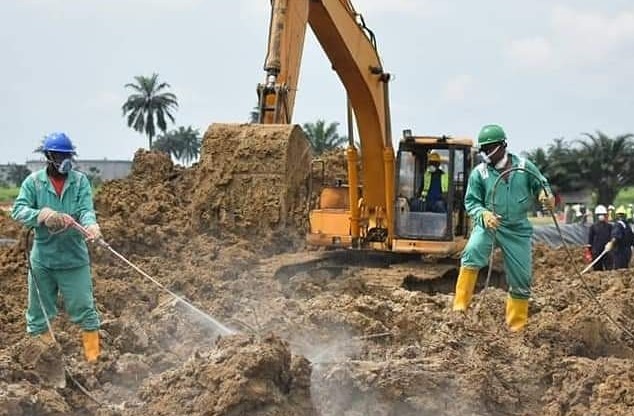The Federal Ministry of Environment has said that, despite some challenges encountered along the line, the Ogoni clean-up project has recorded remarkable achievements within its three years of operation.

The spokesman in the ministry, Saghir el Mohammed, said that the Federal Government has ensured that the Ogoni clean-up is carried out in line with international best practices, adding that every recommendation in the United Nations Environment Programme (UNEP) Report is strictly followed by re-engaging UNEP team to provide technical support both on the field and in the Project Coordination Office (PCO).
Mohammed, Director of Press in the Environment Ministry, said: “The Federal Government led by President Muhammadu Buhari remains resolute and committed to the promise made to the people of Ogoni to clean up polluted lands and restore the livelihood of the people. The President has demonstrated his commitment by giving approval to the request by the Minister of Environment, Dr Mohammad Mahmood Abubakar, to carry out some administrative and technical energisation as well as reinvigoration of the processes for better performance and project delivery.
“The Ogoni clean-up project, being the first of its kind, is not without challenges. But government is constantly following up on the progress and challenges being faced on the project.”
Following the publication of report of the environmental assessment of Ogoniland by UNEP in 2011, the Hydrocarbon Pollution Remediation Project (HYPREP) was set up in 2016 with the mandate to remediate the environment and restore the livelihood of the people.
In 2017, the Project Coordination Office (PCO), headed by Dr. Marvin Dekil, was set up to implement a report of an assessment that was carried out nearly eight years earlier.
Mohammed submitted: “The Ogoni clean-up project, described as the biggest clean-up project in the world, has continued to attract both national and global attention. Which is why it is not surprising that from time to time envoys from countries like the Netherlands, Norway, United Kingdom, and the US pay fact-finding visits to remediation sites. Local and international non-governmental organisations and other interest groups are not left out.
“In a recent report, some groups had tried to misinform the public with a misrepresentation of the true status of the project with insinuations that the clean-up has failed. Before drawing any conclusion, it is important to have a good knowledge and understanding of the processes involved in remediation for anyone to truly appreciate the efforts and the enormous work that HYPREP has put in to ensure that the contaminated land in Ogoni is remediated.”
According to him, about 70% of the contractors are expected to complete work by ending of August 2020, adding that the other 30% are expected to finalise by end of November 2020.
“On the February 15, 2020, more remediation sites were handed over to 29 contractors. HYPREP has commenced processes (such as homage, etc) to enable contractors access remediation site and commence operations.”
Mohammed added that through the manpower development programmes, the project created sources of livelihood for indigenes, such as the 15 Ogoni youths that were trained in fabrication and use of cassava processing machines, as well as 400 women trained on agro-based skills such as feed production, poultry, as well as fish and crop farming.
He added that besides embarking on initiatives to improve the quality and quantity of water in the communities, the project has created employment opportunities, sensitised indigenes on inherent opportunities, organised awareness lectures on Covid-19 safety procedures, and is in the process of transforming the Ken Saro-Wiwa Polytechnic into a Centre of Excellence.
